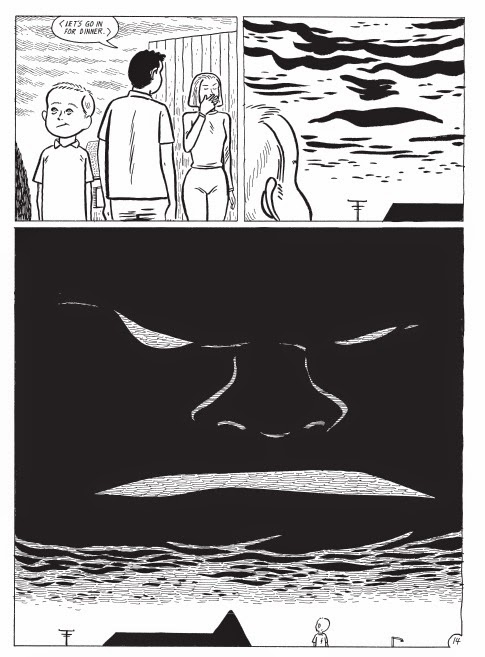A site for links and information about graphic novels for anyone interested in reading them. I hope that you find my posts informative, useful, or entertaining. Thanks for stopping by!
Tuesday, November 25, 2014
Bumperhead
Last year, the prolific and legendary Gilbert Hernandez impressed with his semi-autobiographical exploration of childhood, Marble Season. This year, he follows up that book with his second one published by Drawn & Quarterly, Bumperhead. If Marble Season was about childhood, then Bumperhead appears to be about adolescence. The main narrative here follows the titular Bumperhead, who's really named Bobby, during five different periods of his life, which are defined by his musical choices and relationships. Interestingly, the book seems to start in the 1970s, but it really seems to exist in a strange state where each section happens in the exact same time period even though they depict very different portions of Bobby's life. It is as if time has collapsed into itself and all things happen simultaneously, and I felt it was a great way to think about the function and impact of memory on our lives.
In the first part, Bobby is a young boy who is teased because of his noggin. We meet his parents, his Spanish-speaking dad who cannot really communicate well in the US and his chain-smoking and detached mother. We also meet his friends, including his buddy Lalo who has a magical object that lets him see the future. Bobby is interested in certain girls he knows, but he is too shy to do anything.
He is also menaced by an ominous and horribly human-looking sky.
Over the course of the later chapters, Bobby and his friends age, horse around, and experiment with music and substances. Bobby begins to find it easy to talk to girls, and he passes in and out of relationships with several. He gets into glam artists like Mott the Hoople and Gary Glitter for a while, gets into a harder rock phase where he idolizes Alice Cooper and The Ramones, and settles into the raucous punk scene where he listens to groups like The Sex Pistols and The Germs. His musical tastes are part of his metamorphosing identity, and much of the book looks at how he fits into the world, how his family life radically transforms, and how religion fits into everything. Even though it seems to be the deceptively simple story of a life, and Bobby's tale takes on a sort of mythic or magical kind of status. In the end this is a book about a mundane life, the universe, and everything.
All of the reviews I have read of this book have been full of praise. The Onion A.V. Club's Oliver Sava called it "an engaging, immensely rewarding story about the nature of time and reclaiming the present from a tortured past." In The Comics Journal Richard Gehr opined, "Bumperhead finds Hernandez at his most humane and personal." Emily Temple lauded its "frantic" storytelling, commenting that "it reads like how memory feels: you get it in snatches, in patterns, in moments of glory or pain." Publishers Weekly gave it a starred review, advising readers, "Do not miss this delicate, heartbreaking masterpiece."
Hernandez sheds more light on the origins and autobiographical aspects of the book in this interview.
Bumperhead was published by Drawn & Quarterly, and they provide an excerpt, reviews, and more here.
Labels:
adolescents,
biography,
Bumperhead,
families,
Gilbert Hernandez,
growing up,
magic realism,
OGN,
relationships
Subscribe to:
Post Comments (Atom)




No comments:
Post a Comment